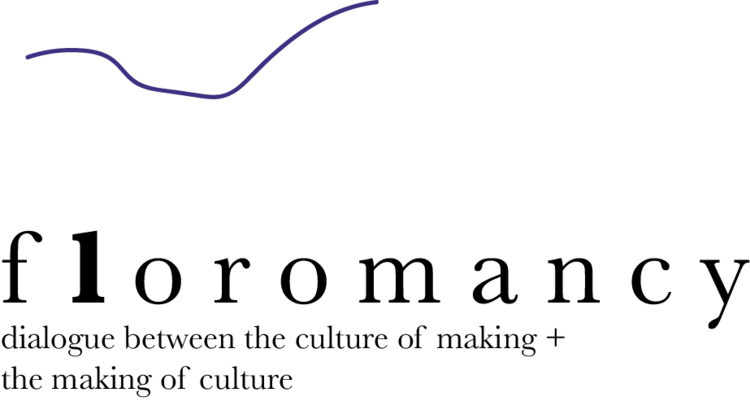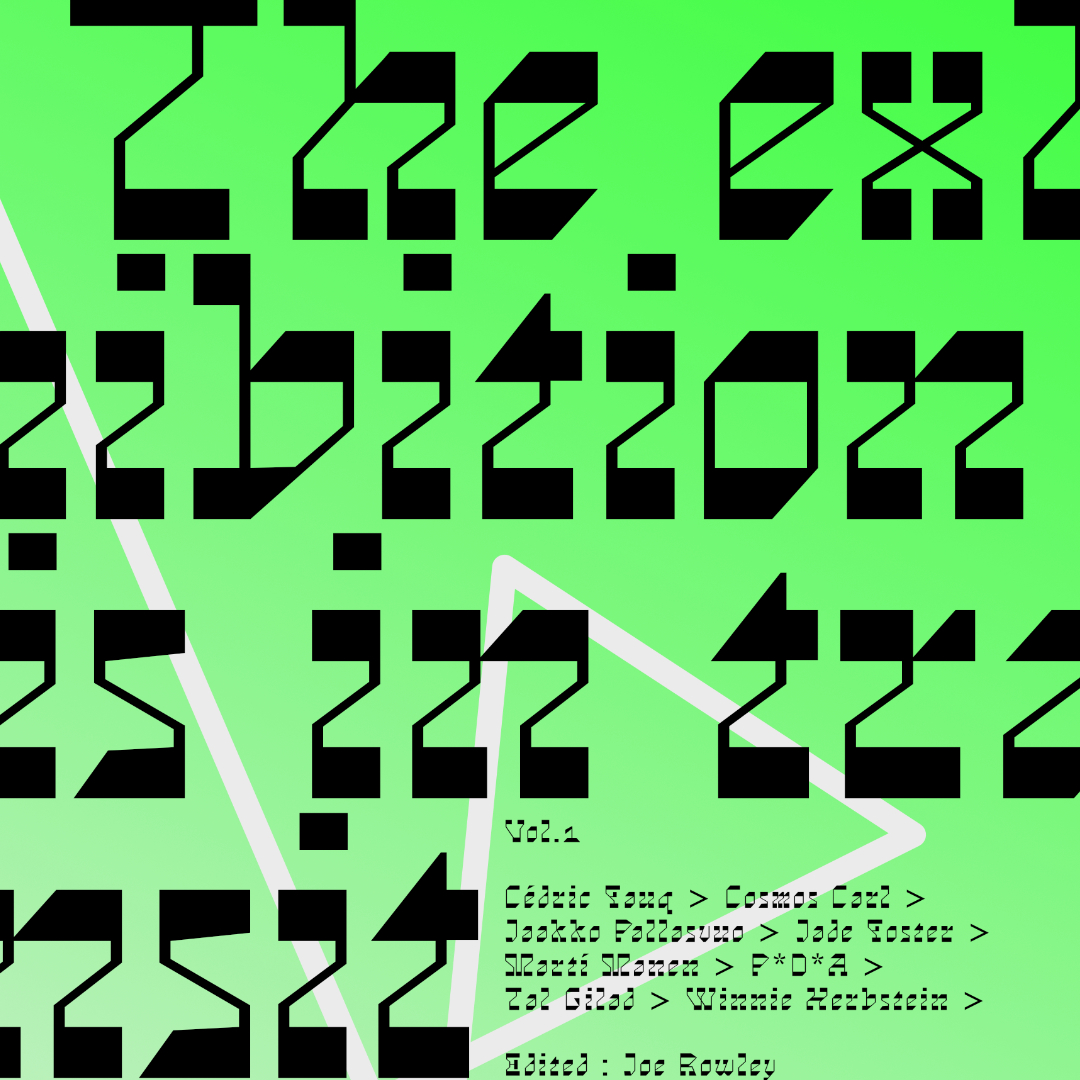

Transit in the simplest sense is the act of moving goods and/or people from one place to another: A to B. More abstractly, this can extend to ideas and signals. It can also be a system, like mass transit; a network of connections and collectivised reliances and dependencies, supporting and enabling. When we start to consider transit in those terms, it becomes more speculative. We add a few intervening stations between A and B, not necessarily stopping at them but at least being conscious of them.
The contributions presented in this collection are comparable to those stops. The destination for the journey is as yet unknown, however, but perhaps in the same way as the vista that passes by the train window changes, offering clues to the condition of your future ports of call, so shall these contributions provide clues for a possible future for the exhibition.
Consideration of the space of the exhibition and the perimeters of what the exhibition could be are abundant across the contributions. Platform Parasite by Cosmos Carl (Saemundur Thor Helgason & Frederique Pisuisse) takes a guided tour through the concept of Cosmos Carl as a platform. Featuring artworks that inhabit the corporate spaces of the internet (which is to say the whole internet) Cosmos Carl is a plea for the creation of an online public space. The work tracks many of the positive possibilities presented by digital platforms, but also highlights issues of ethics and discussions of the institution in both physical and digital contexts.
The root of the word exhibition is in the act of making something public. In considering that the possibilities of the what exhibition is and where it is going become boundless. Cosmos Carl shows this well and uncovers some of the possibilities for exhibition-making on digital/online platforms. Of course, the past 18 months or so have forced all of us further and further into online platforms. The realities of the COVID-19 pandemic have caused our life to be condensed to a screen, completely dependent on the internet for work, entertainment, sustenance, love. The ways this has affected exhibition as a structure mediated through digital means in every circumstance possible. There are of course a multitude of the way that impacts on a public. On the one hand, as pointed out in Platform Parasite, the accessibility and assumed ubiquity of the internet presents the possibility for exhibitions and artworks to go viral, as with Alex Frost’s Underwater Unboxing (1). On the other, there is the condition of network fatigue alluded to by Martí Manen in their text Exhibitions in Present Participle. The neat grids that now organise our perspective and frame our existence. The factor of our own private space becoming public. We are all forced to present our curated versions of ourselves. We have become the exhibition, our homes the museum. Manen positions the exhibition as shifting from an attempt to put time into stasis and towards a continuous, unrelenting present.
The reliance on the internet also presents its own issues of access. Many scoffed at British politician Jeremy Corbyn when they proposed to provide every home with free WiFi in their 2019 election campaign (2). How farsighted that proposal seems now when many, made redundant from jobs that cannot be performed from the kitchen table, can’t afford the price of internet connection and are effectively cut out of the labour market until restrictions ease. This combined with terrifying proposals like that of Facebook’s internet.org scheme providing drones servicing internet limited areas with WiFi limited to accessing Facebook (3), and national firewall in authoritarian countries like China restricting and monitoring their population's web usage. Despite the egalitarian ambitions at the birth of the internet and its continued facade of opportunity and openness, there are still barriers, controls and separations. These platforms offer the same dangers of biassing and production of toxic historiographies as the institutions of the 18 and 1900’s. In their 2007 essay, It’s Not About Mel Gibson Richard Flood writes on the notion of bad history. “Bad history is that which evolves from tampering with, denying or replacing the tentatively real with something else that is probably less real” (4). This practice has been turned up to eleven with the birth of 24-hour news streams and social media. The rapid-fire of content and the representations of everything as narrative; somehow unreal, somehow distant, global actions mediated through constantly shifting layers of bad history breed antagonism and reenforce existing separations.
This condition is reflected in the art world as Tal Gilad suggests in their set of anecdotes reflecting on the last year. Specifically the experience of attending the opening of Swedish artist Åke Hodell’s exhibition Resistance at Tensta Konsthall in Stockholm. The restrictions on visitor numbers required a guest list and the strange occasion of a screen being wheeled into place in one of the gallery windows to stream the performance inside to the waiting crowds outside. Gilad reflects that this could be what the art world really wants - “a class system without the bad optics”. This is a sentiment that rings true in many senses. Optics have become an increasingly important element of an institutions activity. The need to be seen to be employing, working with and forwarding people who meet specific minority quotas is causing situations no less problematic than featuring no one from those denominations at all. The exploitative systems in place affect marginalised people exponentially as Jade Foster points out in their call for new systems and new attitudes outside of instrumentalisation of marginalised bodies in Art, Curating, Systems and Stuff: Black Performativity thriving, in spite of. Optics and the outward appearance of the museum through presenting diversity on social media is being used as a smokescreen for the same disparity in rights and avoidance of responsibility as has been ongoing for years. Ironically, transitioning the exhibition away from shallow optics may be the only way to truly make changes that bring a level of equity for all.
Layers of access, visibility and publicness have been bones of contention for years. Gustave Courbet and the Salon des Refusés in response to the 1863 Paris salon's rejection of his works and those of contemporaries like Manet and Pissarro; ongoing discussions around the numbers of BIPOC, LGBTQ+ and non-male identifying artists present in major exhibitions and museum collections; discussion of the necessity of and access to public art and public space by folks like Rosalyn Deutsche (5) and Jack Self (6) show the lineage of these concerns in the field of the curatorial and institutional critique. Cédric Fauq reflects on this in tandem with curatorial ethics in regards to exhibition making and exhibition access in their contribution. However, if we are to truly open that door we need to open it completely, not just a crack.
And what of the artist in all this? What of curators? What of the actual living breathing people? The art world has become a ceaseless grand tour over the past three decades. A circus jangling its way from one biennial to the next. This parade has ground to a halt with the pandemic restrictions; as have the movements of physical artworks to an extent. Pressure on culture workers has not abated, however. If anything it has gone up. The ability to attend a symposium in Bucharest, a performance in Buenos Aires and a studio visit with an artist in Bombay on the same day and still sleep in your own bed is on the surface liberating. At the same time, the sheer quantity of content is intimidating and the feeling of obligation to consume everything sometimes crippling. Winnie Herbstein's poetic exploration of the materials of presentation in a physical sense, best vocally performed, offering an utterance, a reminder, of the sheer quantity of stuff and by proxy labour that goes into an exhibition.
There are considerations of health and self-care that are easily forgotten in what is still, for a reason that escapes me, an excessively cutthroat world. Jaakko Pallasvuo intimates this through their contribution considering the artist's body after death and also for me the quantity we give away in life. The transit of energy and labour from everyone involved in producing an exhibition is immense and should not be forgotten. From a slightly different direction, P*D*A (Public* Display* of Action* - Kjell Caminha, MC Coble, Andreas Engman & Jeuno Kim) present a series of four audio artworks considering radical empathy as an imaginative prism for how art can be used and shared collectively, ethically and empathically. As bodies in 2021, in the pandemic, in the culture sector, we are always public.
This collection is just a start for The Exhibition is in Transit. The contributions here offer glimpses of a few stations on the way, a few clues, a few perspectives on what an exhibition is, what it could be and where it is going. More will come, as will more changes in the world at large that we must adapt to.
We are forever in a state of transit. We are forever in a state of exhibition. But, we must not forget, we have agency over those states and how we want to shape them for our future.
1. Anderson, Penny. 2018. The underwater art of ‘wet unboxing’: why it’s so mesmerising, unsettling and weirdly emotional. The Guardian. Available at: https://www.theguardian.com/artanddesign/shortcuts/2018/sep/10/wet-unboxing-underwater-art-videos-emotional
2. Stewart, Heather; Syal, Rajeev & Walker, Peter. 2019. Labour's free broadband plan fires up the election battle. The Guardian. Available at: https://www.theguardian.com/technology/2019/nov/15/free-broadband-essential-uk-compete-john-mcdonnell-labour-policy-openreach
3. Bhatia, Rahul. 2016. The inside story of Facebook’s biggest setback. The Guardian. Available at: https://www.theguardian.com/technology/2016/may/12/facebook-free-basics-india-zuckerberg
4. Flood, Richard. 2007. It’s Not About Mel Gibson. in Unmonumental: The Object in the 21st Century. eds. Flood, Richard; Gioni, Massimiliano & Hoptman, Laura. London: Phaidon. pp.10.
5. Deutsche, Rosalyn. 1996. Evictions. Cambridge, MA: MIT Press.
6. Self, Jack. REAL Foundation [YouTube]. Basel: Swiss Architecture Museum. 2016. Available at: https://www.youtube.com/watch?v=FlqEifJfybg
In partnership with:

EDITORIAL
Joe Rowley

The Exhibition is in Transit vol.1 will be launching in installments through May on fLoromancy and features contributions from Cédric Fauq, Cosmos Carl, Jaakko Pallasvuo, Jade Foster, Martí Manen, P*D*A*, Tal Gilad and Winnie Herbstein.
Typeface in image - 'Cosmos Skrift' by Gnax Type
Ephemeral Care focuses on ethics, practice and strategies in artist-led and self-organised projects.